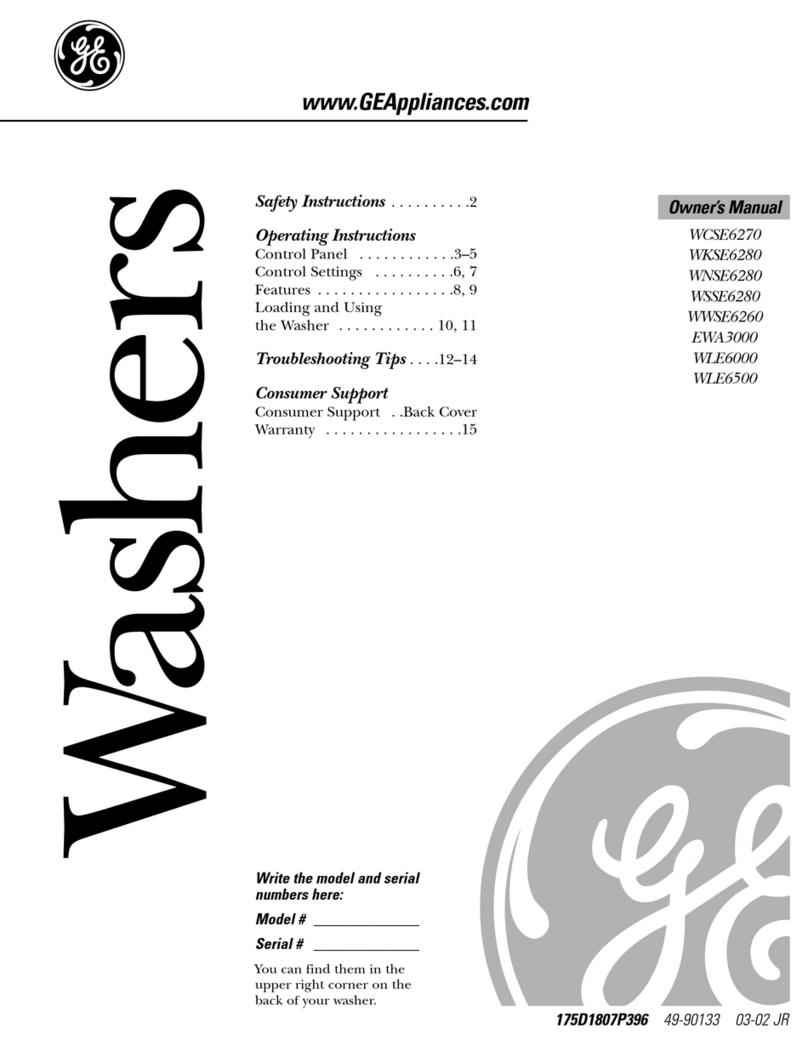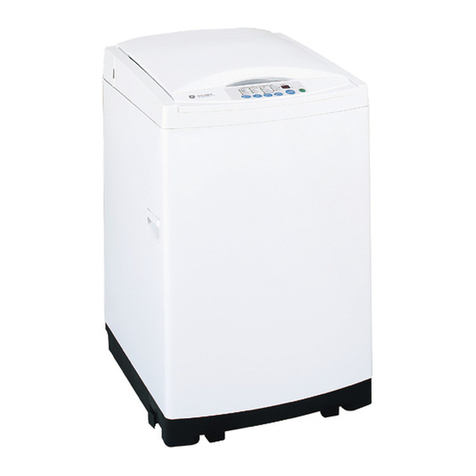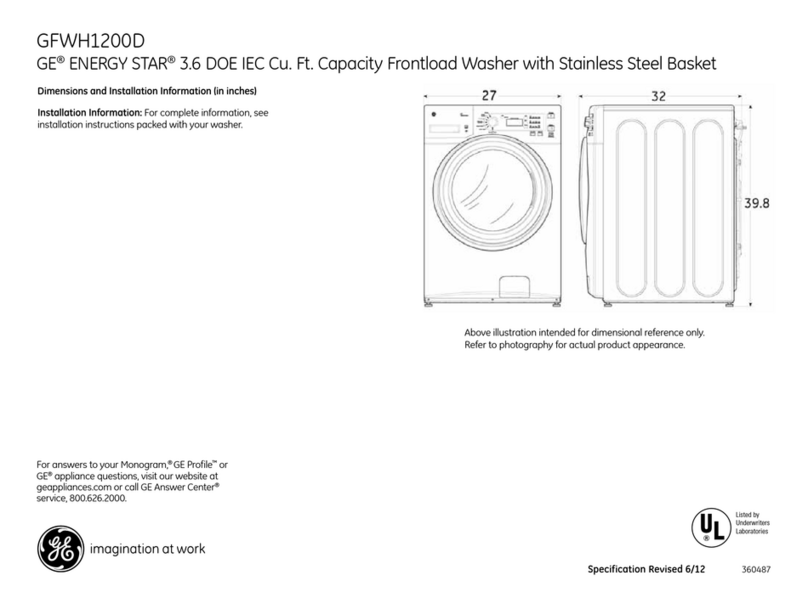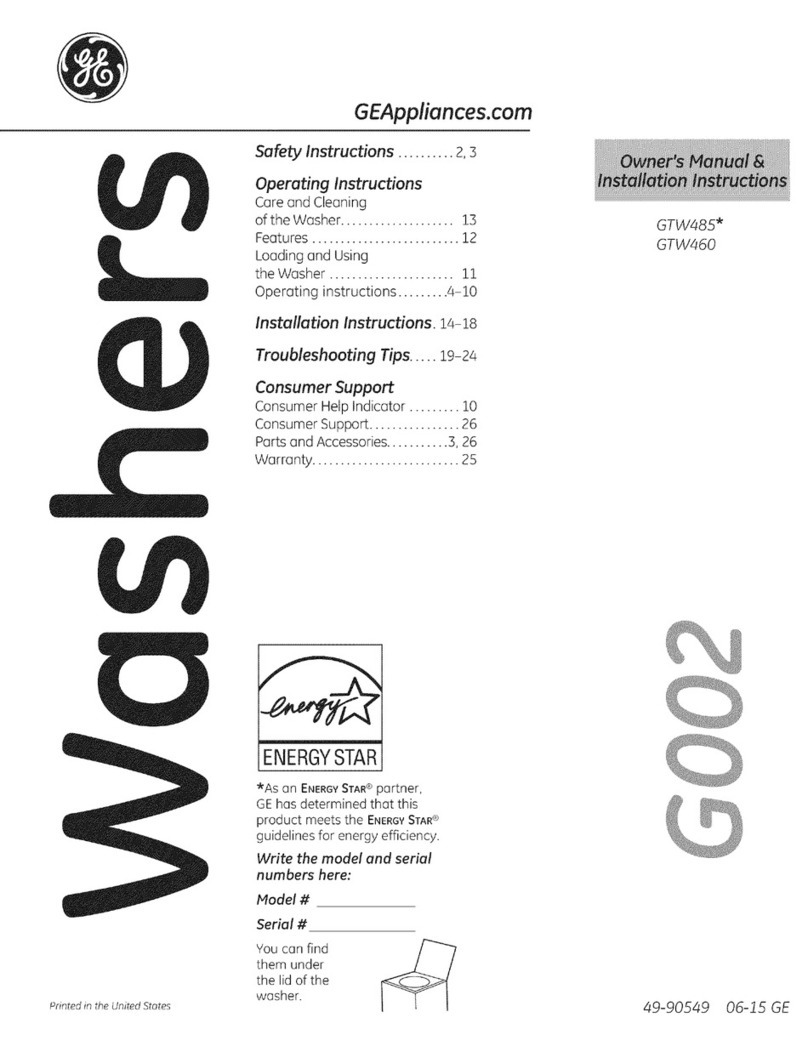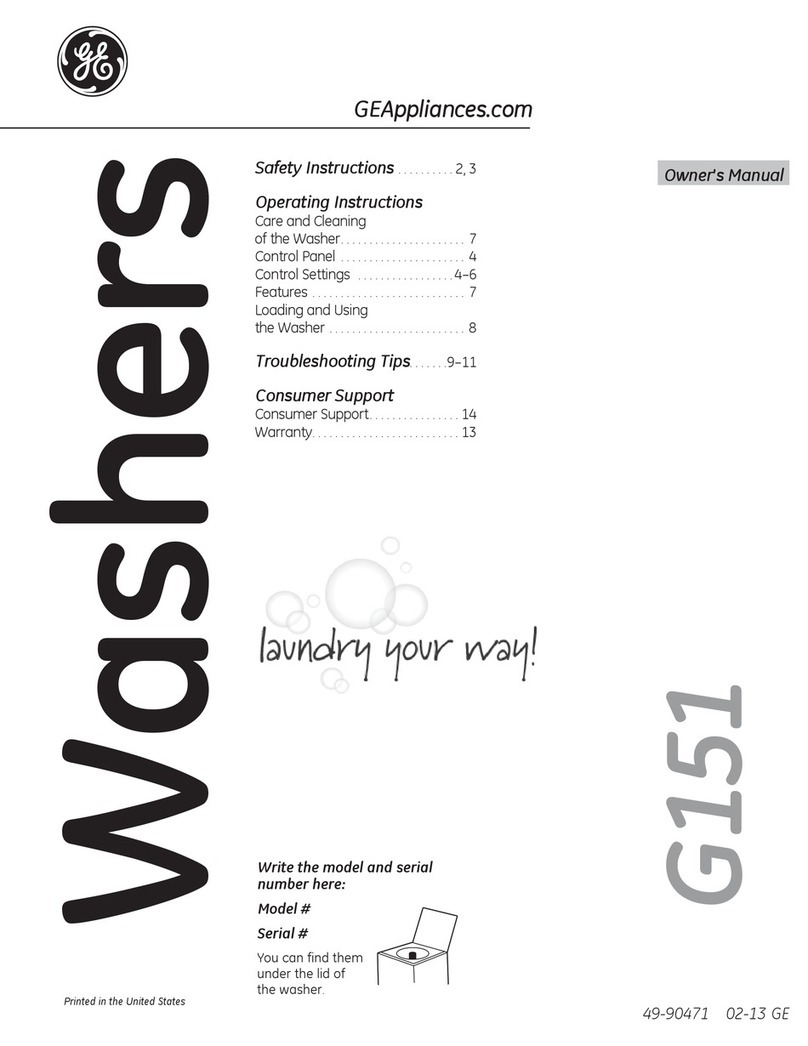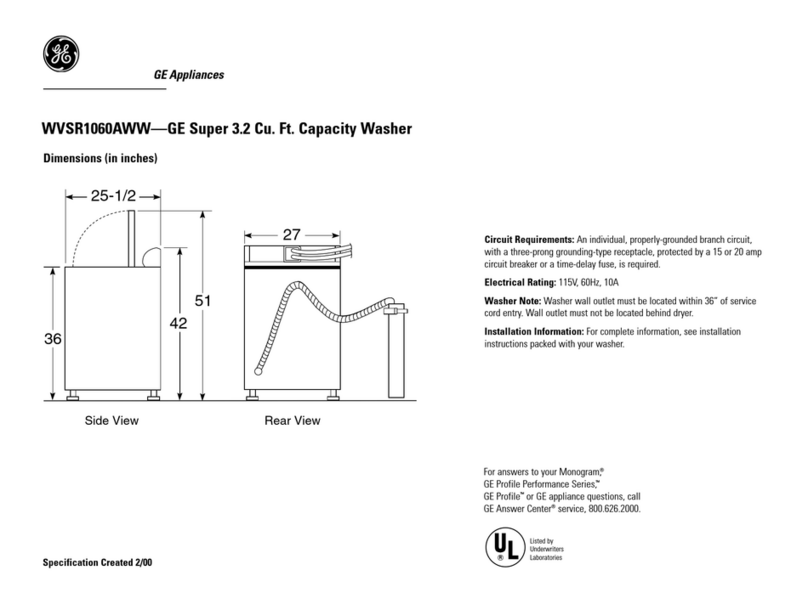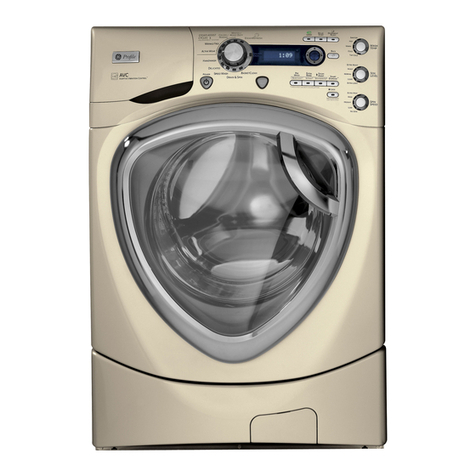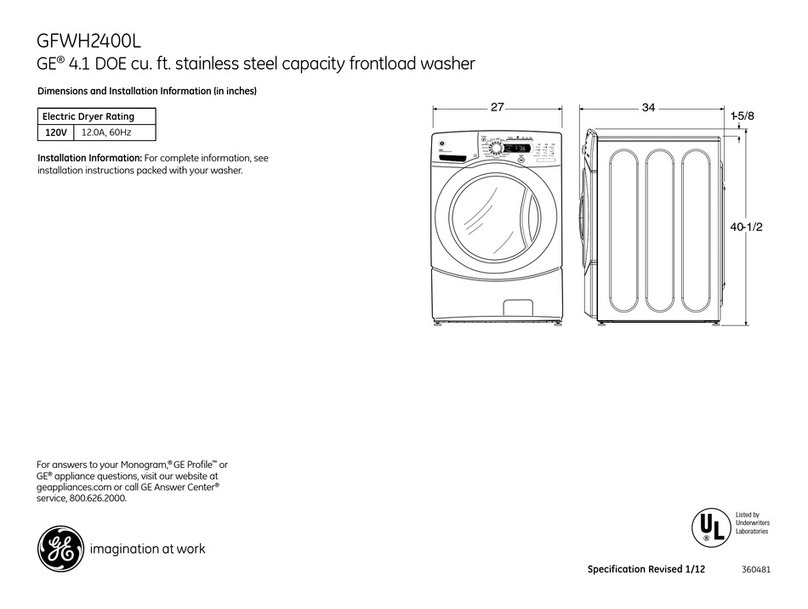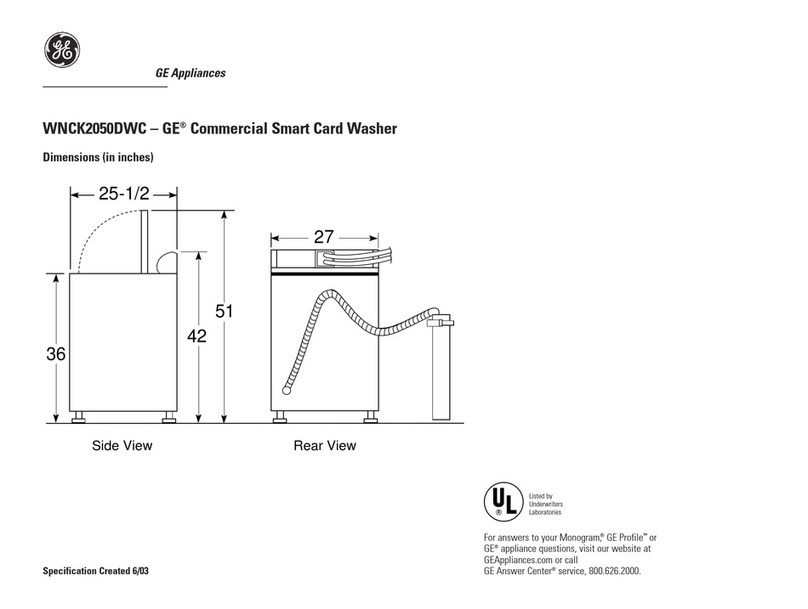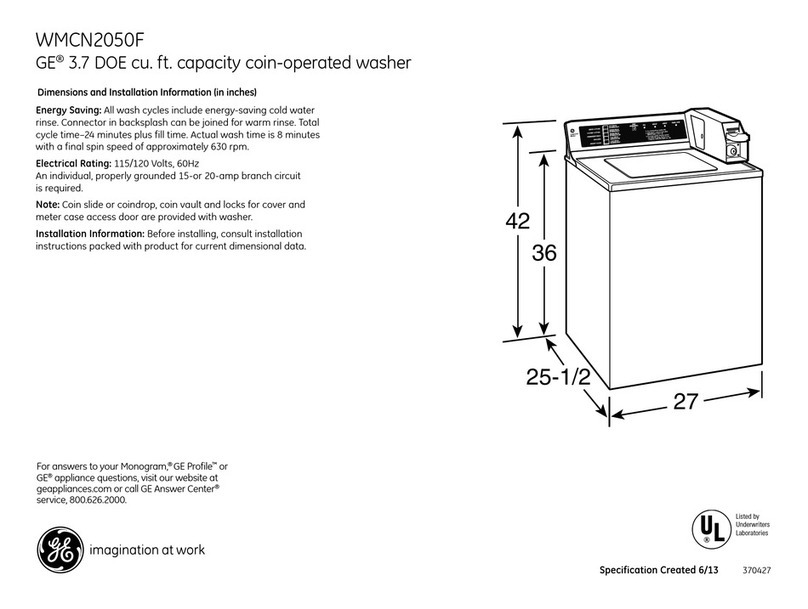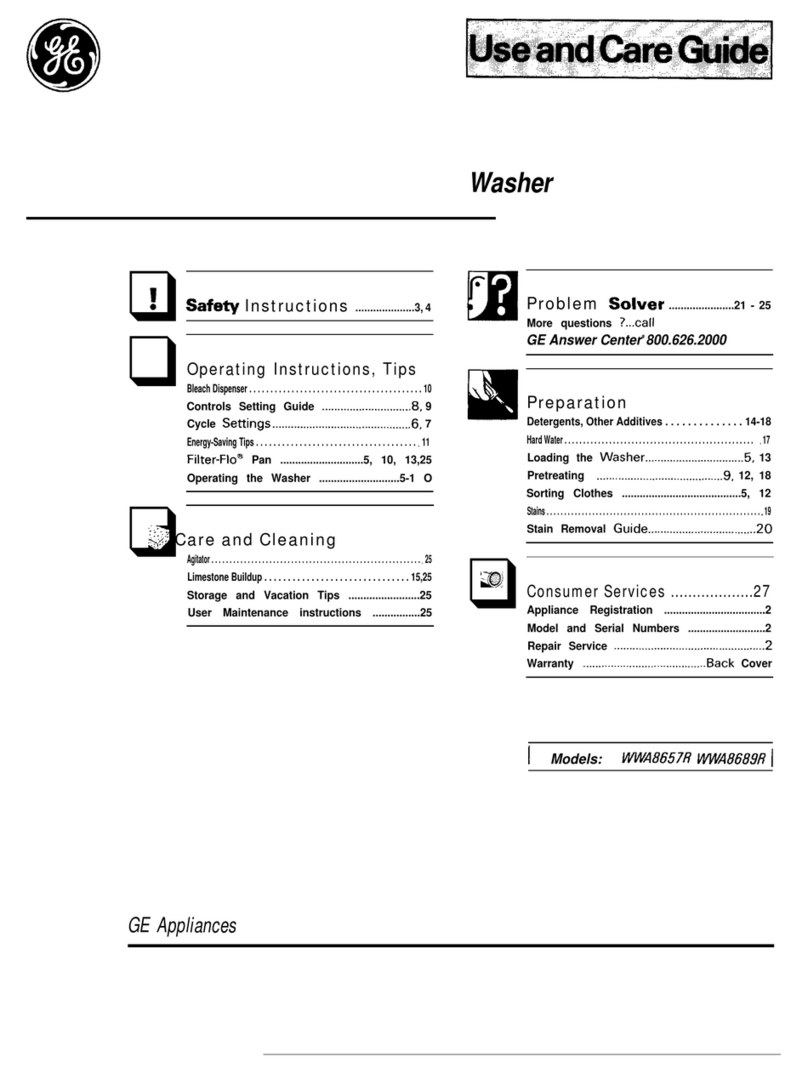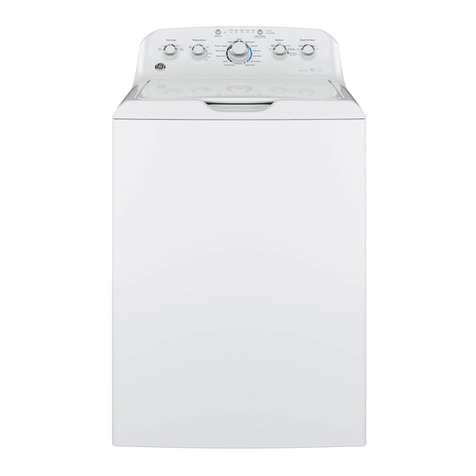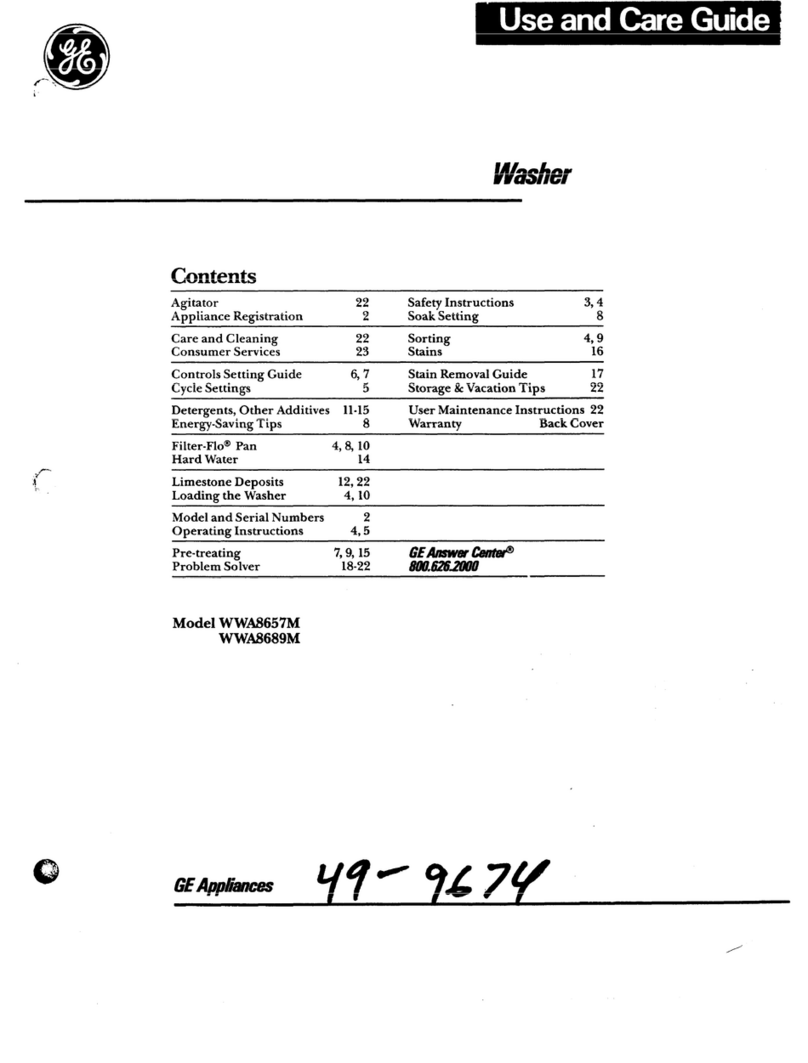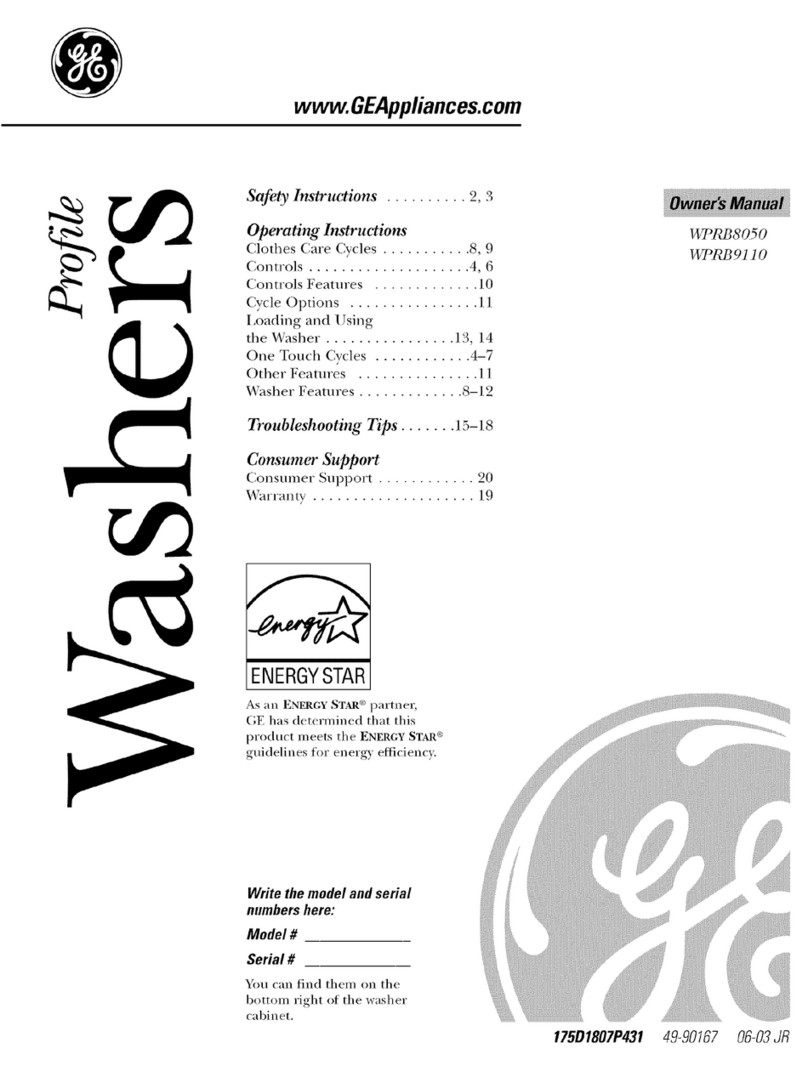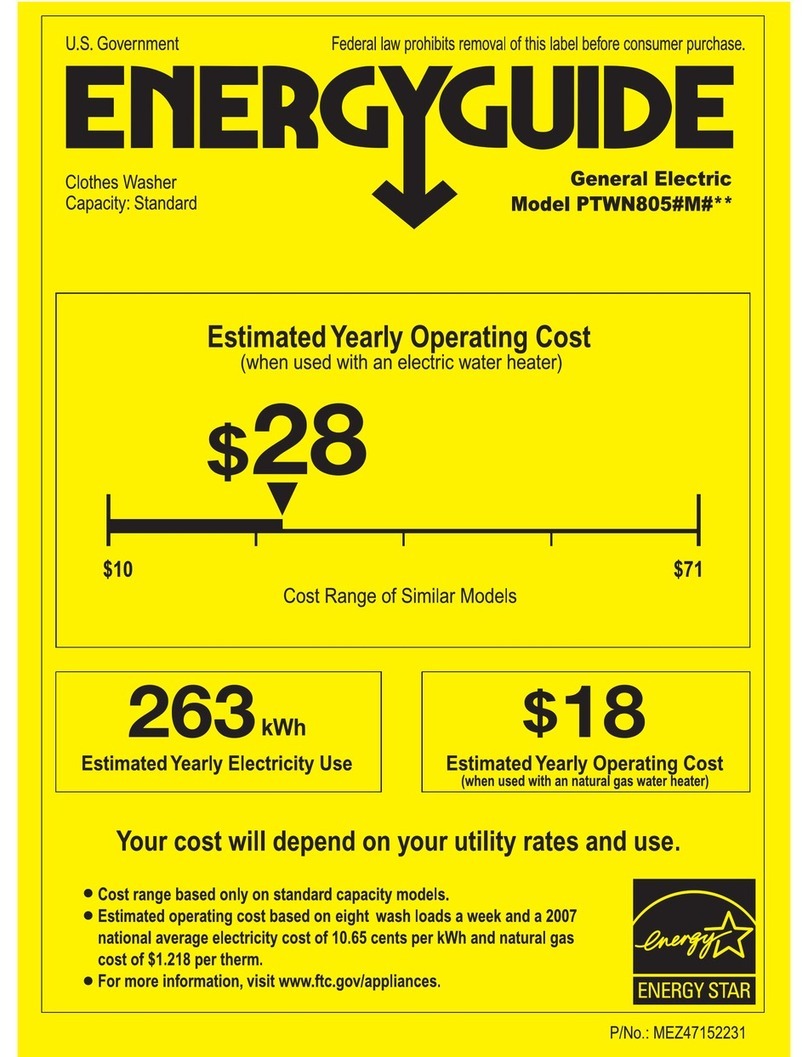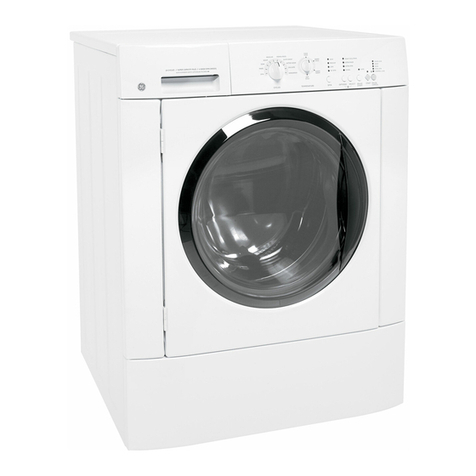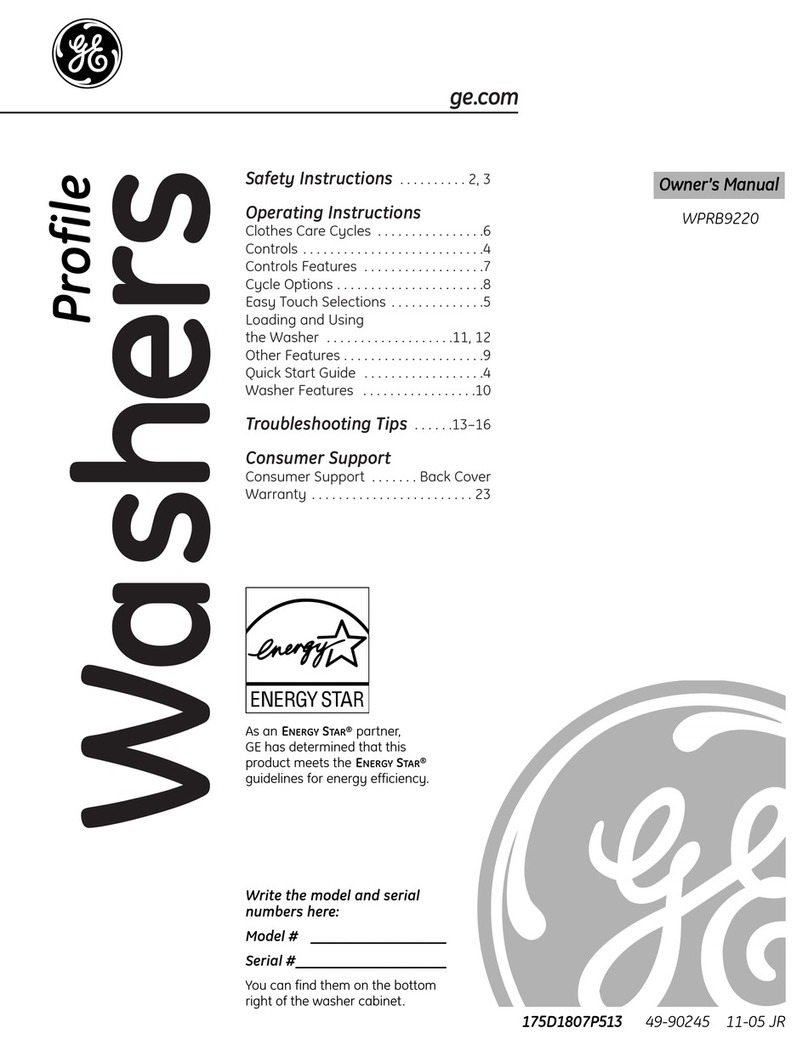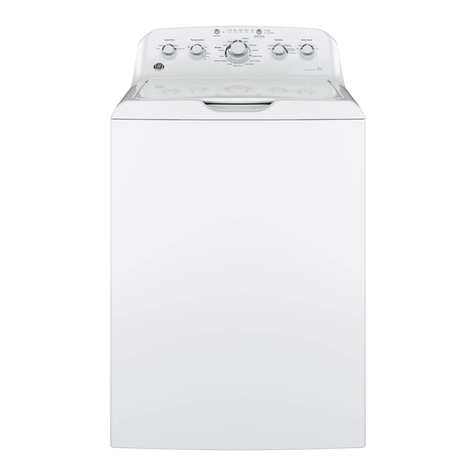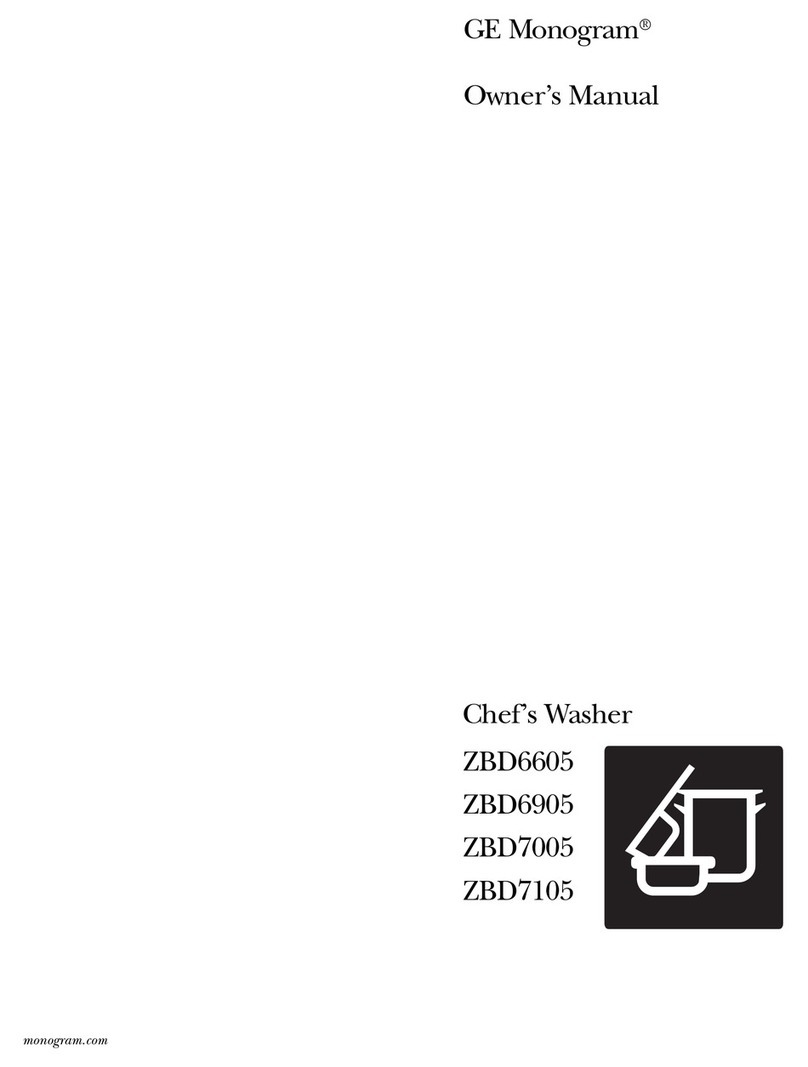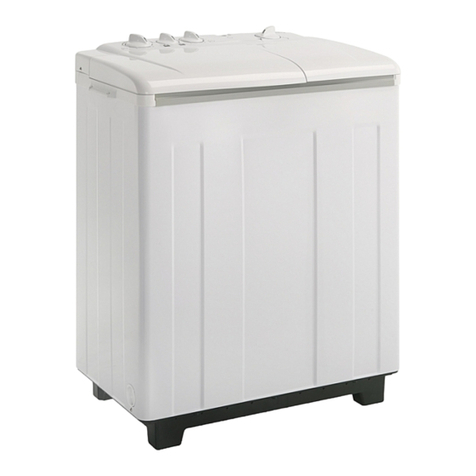WARNINGTO
reducetherisk of
fire,electric shock,or injuryto
persons
when
using
your appliance,
follow basic precautions, including
thefollowing:
Use thisapplianceonlyforits
intendedpurposeas described in
this Use and Care Book.
Thiswasher must beproperly
installed
and
located
in
accordance
withtheInstallationInstructions
beforeitis used.
If
you did not
receive an Installation Instructions
sheet with your washer,
you
can
obtain oneby contacting the service
location nearest
you.
-Properly groundtoconform
with
all
governing codesand
ordinances. Follow detailsin
InstallationInstructions.
-Install
orstorewhereit
will
not
-
?
exposedtotemperatures
below
lreezing
or
exposed totheweather.
-Connect to a properly rated,
protected and sized power supply
circuitto avoidelectrical overload.
-Connect to adequate plumbing
and drain facilities
as
described in
the Installation Instructions.
Turn
off
water faucets when
the washer is not in use to relieve
pressure on hoses and valves, and
to
minimize leakage if a hoseorvalve
should breakorrupture.
When disconnecting this
appliance pullby the plug rather
than the cord
to
avoid
damage
to the
cordorjunctionof cord and plug.
Make
sure
that the cord
is
located
so
that it will not be step$
en,
tripped
overorotherwise subjected to
damageor stress.
*Donotrepairorreplaceanypart
oftheappliance
or
attemptany
Ticingunlessspecifically
llCOmmendedinthisUseandCare
Bookorinpublisheduser-repair
instructions
that
you understand
andhavethe
skills
to
carry
out.
To
minimize
the
possibility
of
injury:
Do
not
mix
chlorine bleach with
ammoniaor acids such
as
vinegar
and/or rust remover. Mixing can
produce a toxic gas which may
cause death.
Do not washor dryarticles
thathave been cleanedin,washed
in,soaked
in,
orspotted with
combustible
or
explosive substances
(such
as
wax, paint,gasoline,
degreasers, dry-cleaning solvents,
kerosene, etc.) which may ignite
or
explode.
Do
not addthese substances tothe
wash water,anddonot use these
substancesaroundyour washer
and/or dryer duringoperation.
WARNIN/*G-HYDROGEIVGASis
producedby thechemical action
within your waterheaterand the
gas
can
accumulateinthewater
heaterand/orwater pipes if hot
waterhasnot been
used
fora
period
of two weeks
or
longer.
HYDROGEN
GAS
CAN
BE
CIR~~CES.~toprevent
the
possibility
of
damageor
injury,
if
you havenot
used
hot waterfor
two weeksormore,
or
moveinto
a
residence
in
whichthehot water
system
may
not have been usedfor
some time,turnon
aU
hot water
faucetsandallow themto
run
for
several
minutes
before
using
any
electricalappliancewhich
is
connected
to
thehot
water
system.
This
will
allow
any
hydrogen
gas
to
escape.
Sincethe
gas
is
flammable,
donot smokeoruse
an
open flame
or
appliance
duringthispmess.
Never reach
into
washer while
it
is
moving.
Before
loading,
unloadingoraddingclothes, push
intheCycle Selector
knob
to
“SMIPn
position,
thenwait until
themachinehascompletely
stopped
before
openingthelid.
*EXPLOSIVEUNDERTHESE
-
3
Close supervision is necessary
if thisapplianceis usedby ornear
children. Do not allowchildren
toplay inside,on orwith this
applianceorany discarded
appliance. Disposeof discarded
appliancesandshippingor
packing materialsproperly.
Before discardingawasher, or
removing fromservice, remove
thewasher lid.
Keep all laundry aids (such as
detergents, bleaches, fabric softeners,
etc.) outof the reach ofchildren,
preferablyinalockedcabinet.
Observe
all warnings on container labels
to
avoid personal injury.
Keep the area around and
underneath your appliances free
fmm the accumulation of combustible
materials, such
as
lint,paper, rags,
chemicals, etc.
Keep the floor around your
appliances clean and dry
to
reduce
the possibility of slipping.
To
minimize the possibility
of electric shock, unplug this
.appliance from the power supply
before attempting any maintenance
or cleaning (except the removal and
cleaning of the lint filter).
NOTE:
Turning the Cycle Selector
knob to an
OFF
position does
NOT
disconnect the appliance from the
power supply.
Do
not tamperwith controls.
Do
not operate this appliance
if it is damaged, malfunctioning,
partially disassembled, or has
missingorbroken parts, including
a damaged cordorplug.
Never climb onorstand on the
washer top.
Do
not wash fiberglass articles in
your washer. Skin irritation could
result from the remaining particles
thatmay
be
picked upby clothing
during subsequent washer use.
